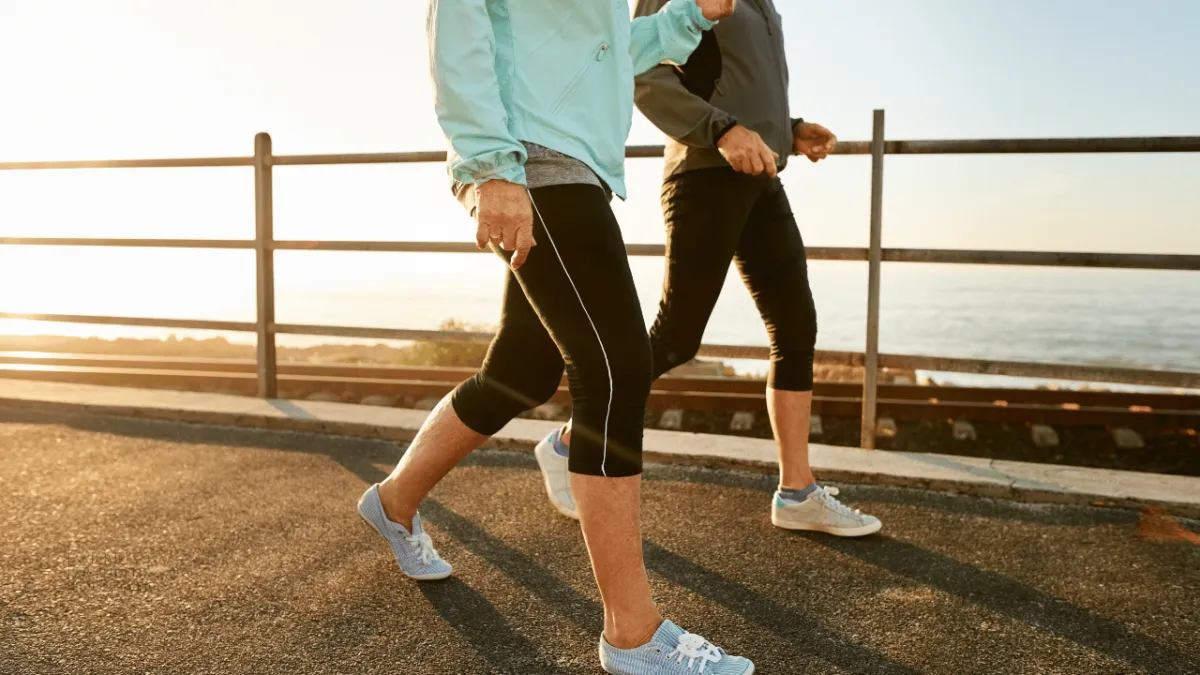Arthritis Treatments
Arthritis treatment primarily aims to alleviate pain, reduce joint inflammation, and improve mobility, ensuring a better quality of life for those affected. Depending on the type and severity of arthritis, treatment options can vary from over-the-counter pain relievers and anti-inflammatory drugs to physical therapy, dietary changes, and even surgical interventions in advanced cases. Recent advancements also explore the potential of biologics and disease-modifying antirheumatic drugs (DMARDs) for certain forms of arthritis. Complementary therapies, like acupuncture and massage, can also offer additional relief for some patients. Regular consultation with a rheumatologist or physician is essential to tailor an effective treatment plan.

Five Wallet-Friendly Ways to Ease Knee Osteoarthritis
Five Wallet-Friendly Ways to Ease Knee Osteoarthritis—Backed by Science
Living with knee osteoarthritis (OA) can feel like every step steals a little freedom. The good news is that several low-cost, holistic approaches can dial down pain, boost mobility, and put control back in your hands. Below are five evidence-based strategies you can start this week—no pricey gadgets required.
1. Move Every Day (Yes, Even When It Hurts a Little)
Why it works
A 2025 network meta-analysis of 13 randomized trials found that diet-plus-exercise programs produced the biggest pain reductions—especially once participants lost ≥ 7 % of body weight pubmed.ncbi.nlm.nih.gov. Movement lubricates cartilage, strengthens supportive muscles, and keeps the joint from stiffening.
Action steps
Begin with a 10-minute flat-surface walk after breakfast and dinner.
Add simple chair-stand squats (three sets of 10) on alternate days.
Track progress with a free pedometer app; aim for 5 000–7 000 steps if you’re starting from sedentary.
Combine activity with modest calorie trimming (swap sugary drinks for water) to chip away at the 7 % goal.
2. Try Tai Chi Twice a Week
Why it works
In a landmark randomized controlled trial, just 12 weeks of Yang-style Tai Chi cut pain scores nearly in half and improved function, mood, and balance compared with an education-and-stretching control group.
Action steps
Search “24-form Yang Tai Chi beginner video” on YouTube and follow a 20-minute session Monday and Thursday.
If you prefer guidance, many community centers offer drop-in classes for <$10.
Track pain before and after each class on a 0–10 scale to see your personal trend.
3. Add a Daily Curcumin Capsule
Why it works
A 2021 double-blind trial using a bio-enhanced turmeric extract (Curcugen® 500 mg, twice daily) showed significant reductions in WOMAC pain and overall knee discomfort in eight weeks.
Action steps
Look for 500-mg curcumin-with-piperine capsules; take one with breakfast and one with dinner.
Skip if you’re on blood thinners—curcumin can amplify their effect. Consult your doctor first.
4. Boost Omega-3s—Fish Beats Capsules, but Both Help
Why it works
A 2024 review concluded that higher-dose omega-3s eased inflammation, slowed cartilage breakdown, and preserved physical function in OA patients
Action steps
Eat two palm-sized servings of sardines, mackerel, or salmon weekly or take a 2 g EPA + DHA fish-oil supplement daily.
Store capsules in the fridge to reduce “fishy burps.”
Re-evaluate knee stiffness after four weeks.
5. Rub on Capsaicin for Quick Relief
Why it works
A 2024 meta-analysis of eight trials found that 0.025 %–0.075 % topical capsaicin reduced pain with a large effect size versus place.
Action steps
Apply a pea-sized amount of 0.05 % capsaicin cream around (not directly on) the kneecap three times daily.
Wash hands thoroughly; avoid touching eyes.
Expect a warm sting the first few days—that’s normal and fades with use.
Quick-Start Checklist

The Takeaway
You don’t need costly injections or boutique supplements to start feeling better. Consistent movement, anti-inflammatory nutrition, and topical relief form a powerful trio. Give each strategy four to six weeks, track your pain and function, and share your log with your healthcare provider to fine-tune the plan. Small steps, big gains—your knees will thank you.
Plain-Text Study References
Wang C. Tai Chi is Effective in Treating Knee Osteoarthritis: A Randomized Controlled Trial. Arthritis Rheum. 2009;61(11):1545-1553.
Shahid A. Comparison of Weight-Loss Interventions in Overweight and Obese Adults with Knee OA: Network Meta-Analysis of RCTs. Osteoarthritis Cartilage. 2025;33(4):518-529.
Lopresti AL. Curcumin Extract (Curcugen®) Reduces Knee OA Pain: Randomised, Double-Blind, Placebo-Controlled Study. Nutrients. 2021;14(1):41.
Shawl M. Omega-3 Supplementation and Its Effects on Osteoarthritis. Nutrients. 2024;16(11):1650.
Tshering G. Efficacy and Safety of Topical Capsaicin in Osteoarthritis Pain: Systematic Review & Meta-Analysis. Phytother Res. 2024;38(7):3695-3705.
Understanding Arthritis Through the Numbers
60 million
Close to 60 million adults have been professionally diagnosed with arthritis.
1in 4
One out of every four adults is affected by some form of arthritis.
300,000
A remarkable 300,000 young ones are living with juvenile arthritis.
100+
There are more than 100 conditions related to arthritis
Promoting Interventions That Reduce Arthritis Pain
American Arthritis Foundation recognizes several proven approaches to reduce arthritis symptoms:
Be active. Physical activity—such as walking, bicycling, and swimming—decreases arthritis pain and improves function, mood, and quality of life. Adults with arthritis should move more and sit less throughout the day. Getting at least 150 minutes of moderate-intensity physical activity each week is recommended.
Protect your joints. People can help prevent osteoarthritis by avoiding activities that are more likely to cause joint injuries.
Talk with a doctor. Recommendations from health care providers can motivate people to be physically active and join a self-management education program. Should your arthritis be interfering with your activities of daily living you may be a candidate to receive many new treatments, and learn how to reverse the arthritis condition.
Have a question?
We're Here to Help
By providing my phone number, I agree to receive text messages from the business.


